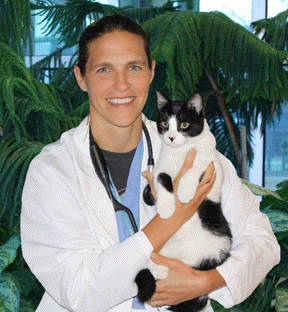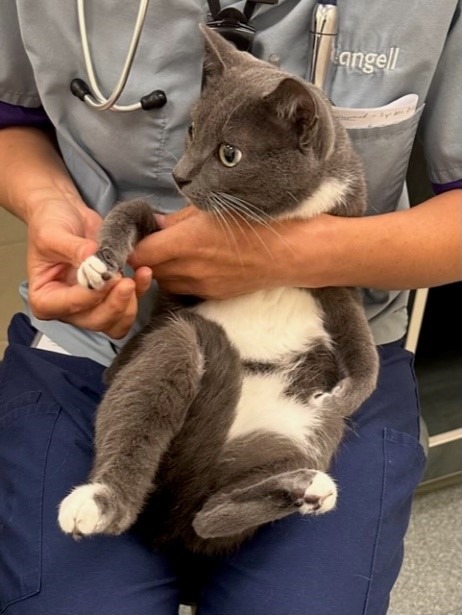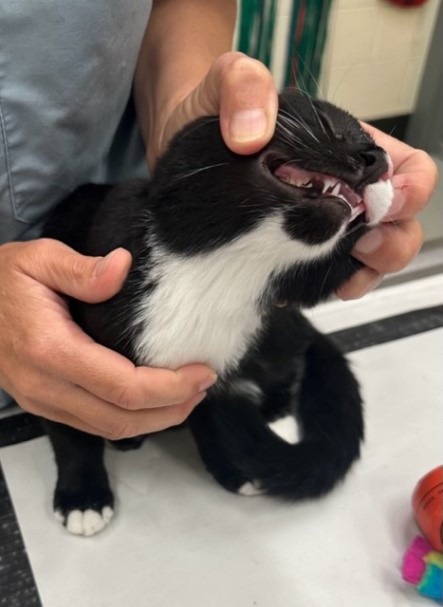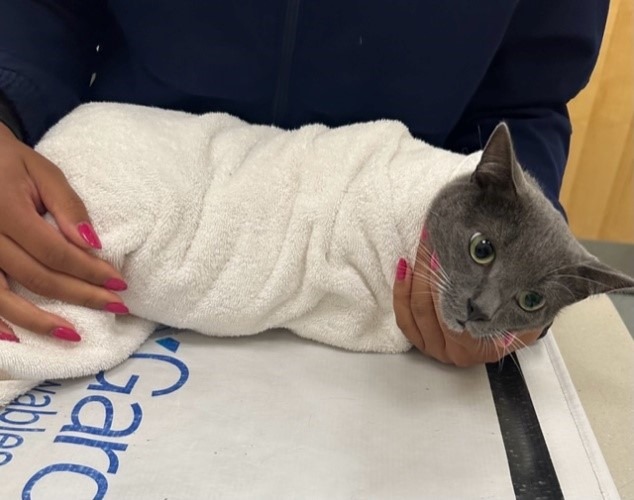-
Adopt
-
Veterinary Care
Services
Client Information
- What to Expect – Angell Boston
- Client Rights and Responsibilities
- Payments / Financial Assistance
- Pharmacy
- Client Policies
- Our Doctors
- Grief Support / Counseling
- Directions and Parking
- Helpful “How-to” Pet Care
Online Payments
Emergency: Boston
Emergency: Waltham
Poison Control Hotline
-
Programs & Resources
- Careers
-
Donate Now
 By Kate O’Hara, DVM
By Kate O’Hara, DVM![]()
angell.org/generalmedicine
generalmedicine@angell.org
617-522-7282
September 2023
x
x
People choose cat ownership for many reasons. Cats can be affectionate and loyal companions to those they trust. They can be playful and entertaining and are often lower maintenance pets than dogs —requiring less space and demanding less activity and attention. Although some cats can be exceptionally social creatures, they tend to be more independent and seek social interactions on their own terms. Some of these qualities that can make cat ownership attractive can also make aspects of husbandry or caring for a cat more challenging and stressful for both the cat and the owner.
There are times when a more hands-on approach is needed when caring for one’s cat. It would be nice to institute preventative care such as brushing, nail trimming, ear cleaning, and tooth brushing (yes, even tooth brushing!) without the stress of forcefully wrangling the cat. Additionally, it is likely that at some point, it will be necessary for an owner to give their cat medication or other medical treatments. Giving these treatments without negatively impacting the cat’s (or owner’s) quality of life allows us to care for them more effectively.
While some level of stress may be unavoidable, acclimating a cat to handling and understanding more effective methods for restraint can prepare a cat to be more accepting of care. The goal is to make caring for a cat when needed less stressful and more efficient while preserving, if not improving, the mutual relationship.
Acclimating your cat to handling
Acclimating a cat to handling, in general, will always make restraint for routine care and treatments easier, though some cats still might be more amenable to this than others. Also, stress-free handling for petting and play will help socialize a cat and strengthen the bond and trust between the cat and owner even when treatment isn’t needed. The amount of socialization a cat receives, the age at which this occurs, and how many people are handling the cat will all affect how open a cat is to being handled later in life. It is easiest to acclimate a cat to handling when it is a kitten. Kittens typically will be most accepting of new experiences and will be able to recover more quickly from stressors in the first two to eight weeks of life. A late socialization period can extend up to 16 weeks. Frequent daily gentle play and handling during this period with a variety of people is best. The kitten should be comfortable with various interactions, including being carried and held and touching the ears, paws, belly, and mouth.
Although a cat may be most receptive to socialization during this early period of kittenhood, owners of adult cats should not be discouraged. Older cats can still be taught to accept handling, though this may take more time and a more gradual approach. This is best done by “babystepping” them into it. Initially, interactions can be limited to offering treats, petting or brushing, and playing. During this period, you will better understand what kinds of touch your cat enjoys. My cats always prefer rubbing under the chin or around the neck and ears. Over time, you can move to more extended periods of touch when the cat is next to you and then eventually while holding it. You should continue reinforcing the acceptance of the interactions with positive rewards such as treats, play, or gentle scratching under the chin if the cat enjoys that.
Once a cat accepts being held, you can gradually work toward getting the cat to take more touch over time, moving the ear flaps, lifting the lips, opening the mouth, and exploring the paws. With gentle pressure over the paw, you can learn to extend and retract the claws, getting the cat (and yourself) used to this before ever trying to clip the nails.
Knowing how to safely and confidently restrain your cat
Once a cat accepts general handling, one can gradually work on more controlled restraint for procedures. The level of control needed will depend on what you are trying to accomplish. However, for at-home care, less is always more. Minimal restraint to contain the cat rather than fighting to restrict its movement tightly may keep the cat more relaxed and compliant. Having a cat sit willingly with you will always be more effective than trying to “muscle” it into submission. My cat would prefer to have his body loosely cradled in my lap while I control his legs and head. Other cats may like to sit in front of their owners with their feet on a flat surface. In addition to keeping the cat relaxed, the owner needs to be calm and comfortable. Often, a cat will pick up on an owner’s anxiety and reflect this in its behavior.
When holding a cat for procedures, it is best to approach the cat from behind. Your body should be alongside or behind the cat, with you and the cat facing the same direction. Approaching the cat from the front may spook it and cause it to retreat or lash out. Cats will generally be much more accepting of procedures when approached from behind. To control the head, approach from behind and above the cat’s head to gently but firmly grasp just under each cheekbone using a thumb and index finger. Slightly tilting the head back while keeping the rest of the body still will lift the upper lip and partially open the cat’s mouth. In this position, you can look in the mouth from the side, brush the outside aspects of the teeth, or give an oral medication.


x
While loose restraint is preferable, some cats may need to be more securely controlled. In these cases, having a partner to assist with the procedures is often best. The cat must be familiar and comfortable with both handlers. If the cat is more comfortable with one of the people, then that person should be the one to restrain the cat while also offering treats or other distractions if possible. Wrapping a cat with a towel to control the limbs in a “kitty burrito” can also be a helpful restraint aide. There are also now commercial cat “bags” with strategically located access flaps designed to help facilitate cat handling while keeping them safe and comfortable.

 With cats, knowing how to “pick your battles” may be just as important as handling skills. Some cats will accept more handling and treatment than others, and knowing your cat’s limitations and your own is important. Sometimes, this means limiting tooth brushing to the larger upper back teeth, where cats typically have more issues. For others, it may mean forgoing tooth brushing altogether and reserving the stress of handling more essential medical treatments. It is important to weigh the benefit of any treatment with the focus needed to achieve it.
With cats, knowing how to “pick your battles” may be just as important as handling skills. Some cats will accept more handling and treatment than others, and knowing your cat’s limitations and your own is important. Sometimes, this means limiting tooth brushing to the larger upper back teeth, where cats typically have more issues. For others, it may mean forgoing tooth brushing altogether and reserving the stress of handling more essential medical treatments. It is important to weigh the benefit of any treatment with the focus needed to achieve it.
It would be unrealistic to claim that all cats will be amenable to handling or that all owners can do this physically without significant stress or safety risk. While this may limit what can be done, there are still options available that may make essential medical treatments possible without handling. You can talk to your veterinarian about compounding certain medications into treats or transdermal applications. Calming medications may also be prescribed for veterinary visits, or an owner can consider “home visit” veterinary options.
The main goal is maintaining a rewarding relationship between an owner and one’s pet while balancing the animal’s care needs.